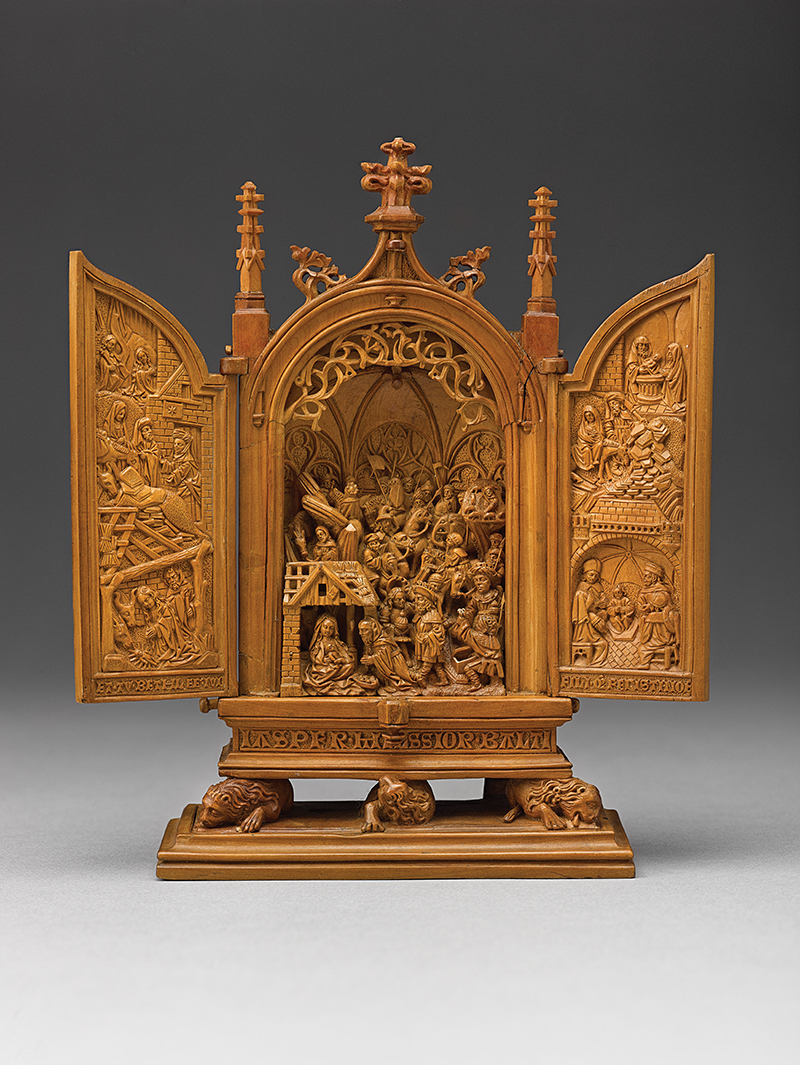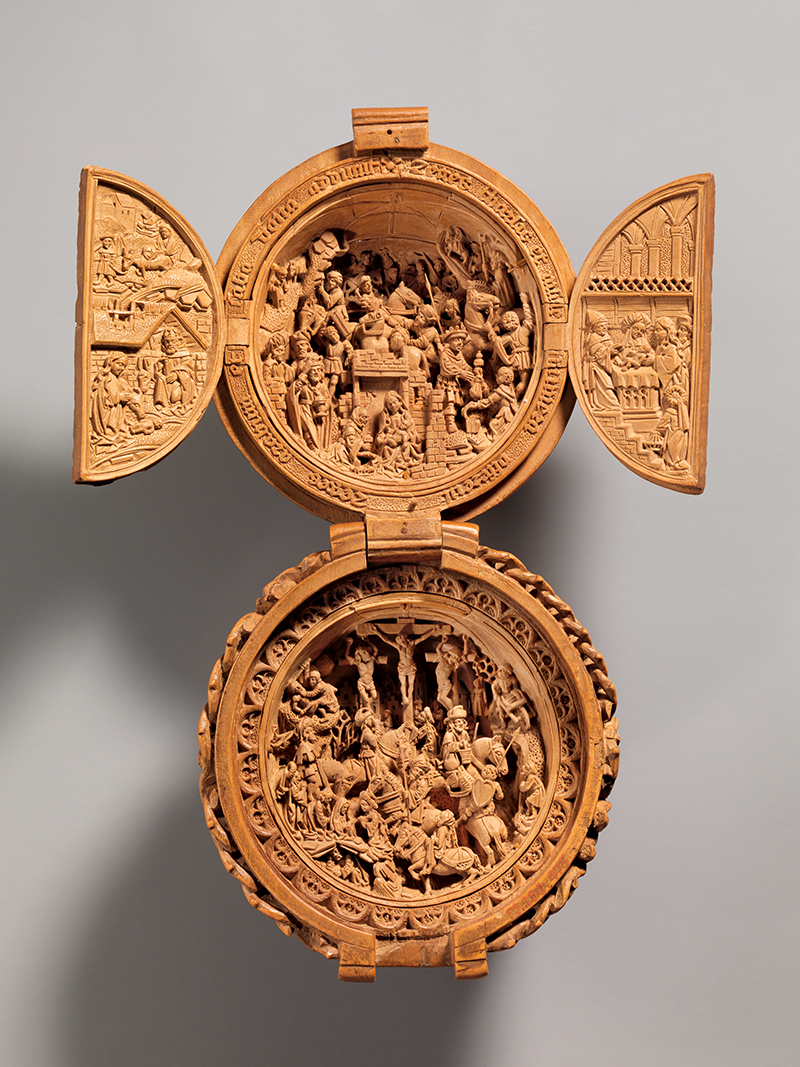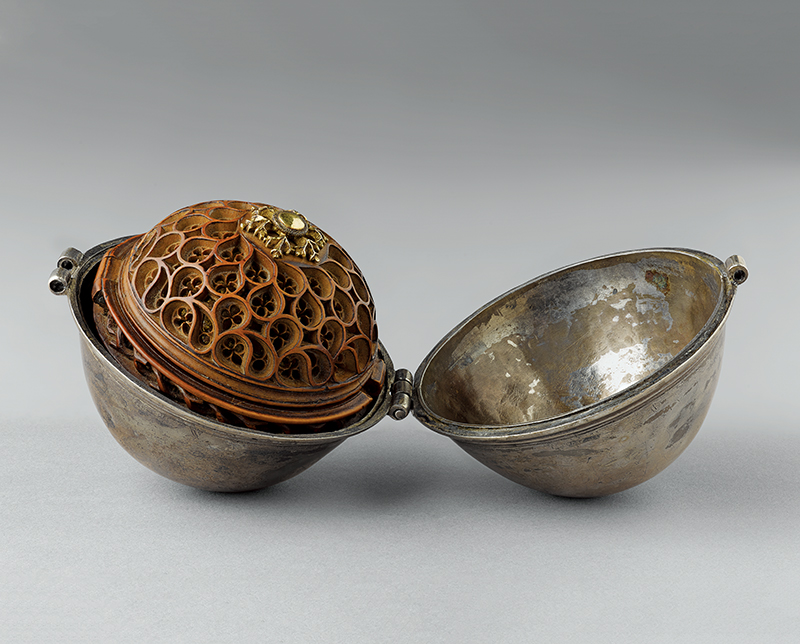The original owners of these small boxwood wonders acquired them for the spiritual impact they provided, which, curiously, is in inverse proportion to their size. Their minute scale and the ingenious intricacy of their carving established an intimate link between the beholder and the essential stories of their faith. In the most accomplished carvings, these played out like a grand opera on a miniature stage, complete with exotic costumes, elaborate props and animals large and small. Such carvings present a holy land in miniature, a sacred realm reached not by actual travel but through intensive looking and prayer.

A world beyond Europe
Objects in the AGO and The Met’s collections picture the Adoration of the Magi with vivid details that allude to a world beyond Europe. The elephant in the background of the AGO triptych (AGO 34208) appears in profile with its big ears and tusk on display. Camels, emblematic of the Holy Land, are present as well. The camel’s long neck and rounded chest differentiate it from the horses pictured nearby, but do not necessarily portray it convincingly. On The Met’s prayer bead (MMA 17.190.475) one of the Magi’s companions removes a pack from the camel’s back. Yet the camel has the tail of a horse, indicative of the artist’s lack of firsthand experience or awareness of more accurate images available in printed books at the time.

Opening their treasures, they offered him gifts…
Like the AGO’s triptych, The Met’s prayer bead features the Adoration of the Magi as the wise men arrive to celebrate the birth of Jesus with gifts in hand. According to the bible, the “wise men from the East […] saw the child with Mary his mother; and they knelt down and paid him homage. Then opening their treasure chests, they offered him gifts of gold, frankincense, and myrrh.” [43] The artists followed the biblical narrative closely; in both examples, one of the wise men removes a gift from a protective chest. The inscription ringing the scene draws not from the Gospel account, but rather from the Book of Psalms, linking the Christian story to Hebrew scripture and further emphasizing the gifts brought from afar: “The kings of Tharsis and the islands shall offer presents: the kings of the Arabians and of Saba shall bring gifts.” [44]

In a prayer bead in the Thomson Collection (AGO 29458), the biblical Queen of Sheba is pictured presenting King Solomon (1012–931 BCE) with an elaborate container that would have contained a precious material like those described above. Like the wise men, Sheba traveled to the Holy Land with hopes of encountering a remarkable person. King Solomon’s reputation as a wise ruler had inspired Sheba to arrive with gifts. Paired with the Adoration of the Magi below, this scene again creates a powerful parallel between Old and New Testament narratives.
Notes
[43] Matthew 2:11.
[44] Psalms 71:10.